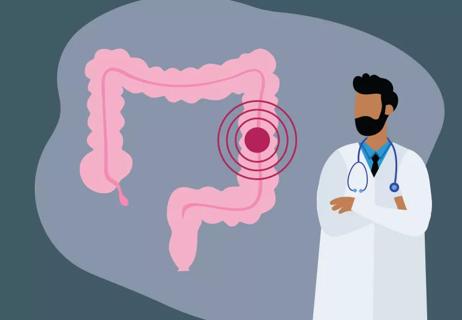Pilates can improve muscle tone, flexibility and strength, as well as help you heal from injuries

If you’ve been looking for a new workout routine that can give you a good balance of flexibility, strength, muscle tone and help for a few aches and pains, Pilates may be the answer. It might look a bit intimidating at first, but it’s much easier to get into — and, depending on what you do, less expensive — than you might assume.
Advertisement
Cleveland Clinic is a non-profit academic medical center. Advertising on our site helps support our mission. We do not endorse non-Cleveland Clinic products or services. Policy
While Pilates has been around for nearly 100 years, it continues gaining traction, picking up new devotees all the time. Part of the reason it’s become such a popular mode of exercise is that it’s customizable to fit you and your health goals, regardless of your age, sex, health status and fitness level.
According to lead yoga therapist Judi Bar, practicing Pilates has many potential health benefits, including increased flexibility, muscle tone and strength. We talked to Bar about these benefits and other aspects of Pilates that make it a worthwhile endeavor.
Pilates is a form of exercise and body conditioning developed by Joseph Pilates in the early 20th century, mostly as a method of injury recovery for dancers. Bar, who has a distinguished background as a dancer herself, is no stranger to the wear and tear these athletes endure.
“Fine-tuned as dancers are, when we’re at our peak, dancing at least six days a week, several hours a day, it’s grueling, and the repetitive motion puts stress on the same muscle groups again and again,” she says
While dancers are especially vulnerable to repetitive motion injuries, they happen to all of us occasionally. That’s why, over time, it became clear that Pilates could benefit a much wider range of people — including people who aren’t injured at all.
Advertisement
“As human beings, we are creatures of habit,” Bar notes. “We walk a certain way, we take the stairs a certain way, we stand a certain way and we sit at our desk a certain way. So, our muscles get imbalanced because of overuse. What Pilates does is help to counteract that.”
Some of the principles that guide the Pilates method include concentration on each movement, use of the abdomen and low back muscles, flowing, precise movement patterns and controlled breathing. Depending on the exercise, Pilates routines can be performed on specially designed apparatuses, including a bed-like structure called a reformer, or more simply on a mat or blanket.
Pilates is a form of strength training, but it doesn’t look like some of the other strength training exercises you might be familiar with. Pilates focuses more on improving muscle tone than building muscles, but the result is similar: greater stability and endurance. Pilates isn’t going to bulk you up — if anything, it’s designed to cultivate a longer, leaner look. Still, it can lay a strong physical foundation for muscle-building activities — and may even reduce your likelihood of injury. More on that later.
If you dig into the research on the health benefits of Pilates, you might find it more confusing than helpful. On the one hand, there’s considerable research into its health benefits for a wide range of people and health conditions. On the other hand, most studies only have a small number of participants — and only monitor those participants for a short period of time.
While the science may not be especially persuasive, 100 years’ worth of anecdotal evidence (from people’s personal accounts vs. research) is nothing to sneeze at. Like yoga, tai chi, qigong and other intentional movement exercises, the potential benefits and generally low risk make it worth trying. And like all exercise, what’s most important is whether or not you enjoy it and how it makes you feel.
According to Bar, the benefits of Pilates are both therapeutic and preventive. The practice may help you recover from an existing injury or manage a chronic musculoskeletal issue. It may also help you establish a healthy baseline, so that when those injuries or issues arise, you’re able to bounce back faster.
Pilates is known especially for improving lower back pain, as seen in both this 2015 and this 2020 study. Bar explains, saying, “Pilates helps lower back pain because, besides tight muscles, lower back pain also comes from misalignment and lack of core strength.”
Proper alignment also makes your gait sturdier and straighter, which can make it easier to exercise and helps prevent falls.
One of the reasons Pilates is such a good workout is that it specifically focuses on building core strength. While most people consider their abdomen to be the core of their body, Bar points out that it extends well beyond that. It might be better to think in terms of your trunk.
Advertisement
“Everything’s attached,” Bar says. “With the core, besides the stomach area, you’re also talking about your sides, your mid to lower back, your buttocks and your hips.”
As you’ve no doubt heard before: What happens in your core affects the rest of your body.
Having a strong, aligned core makes it easier to have good posture — a seemingly small change that can positively impact many areas of your life.
“Relaxing and strengthening your muscles leads to big help for your body,” Bar explains. Take sitting down, for example. “When you’re slumped against the back of a chair, you’re shrunk down, putting pressure on your lower back,” she says. “Hunching also impacts both your breathing and digestion.”
There’s quite a bit of stretching in Pilates — which translates to improved flexibility. In addition to expanding the range of activities you can do, flexibility may protect you from injury, help your muscles relax and help you retain both mobility and range of motion as you get older.
Once again, our core is exactly what it sounds like: Our center. When we’re weak or out of alignment, it makes it harder to find our center of gravity, which can make us more prone to injury, especially in moments when we’re trying to perform multiple movements at once (coordination). By strengthening your core, Pilates may make it easier to find your balance — and maintain it.
Advertisement
As your balance and coordination improve, so does your proprioception (spatial awareness). The result is more effective, balanced movement and a reduced risk of falls or other accidents.
Like meditation and yoga, focusing on your body and breathing is central to Pilates. That awareness will help you better understand your body, for instance: Which muscles are strongest and how they compensate for weaker muscles elsewhere, where you store tension and what makes you feel your best. That education can help you better understand the signals your body sends you every day.
Like yoga and many other mindfulness practices, Pilates is as much about intentional breathing as it is about the body. Being aware of and controlling your breath doesn’t just allow you to deepen a stretch or perform at a higher level — research shows it can also reduce stress. If you allow the breath coaching you get in a Pilates class to spill over into your daily life, you may find yourself better able to handle difficult situations and emotions.
The benefits of exercise for your mental health and well-being are, at this point, firmly established.
While not a high-intensity workout, Pilates gets your heart pumping, and combines strength and resistance training with deep stretching. Think of Pilates as complementing — not replacing — any mental health support you’re already receiving.
Advertisement
Thinking of taking the Pilates plunge? Here are a few tips to help you get started:
You may find that — after getting used to it — Pilates is your new favorite workout. That’s great … as long as you’re supplementing your Pilates workouts with other kinds of exercise.
“It’s not necessarily a stand-alone exercise,” Barr explains. “Because you’re working your muscle groups, you’ll get your heart rate up. But Pilates is not as heavy a cardiovascular workout. There’s some deep stretching and some resistance, yes, but Pilates should still be part of a well-balanced exercise program.”
In other words, doing Pilates three to five times a week is great, but make sure you’re also dedicating time to strength-building activities for your shoulders and arms (like resistance training) and aerobic exercise (like cycling) every week.
The nearly century-old practice of Pilates provides a low-impact, full-body workout that could be a great addition to a well-balanced exercise program. While the research on the health benefits of Pilates isn’t definitive, it suggests Pilates can positively impact your physical and mental health. While it can seem intimidating from the outside, finding a good instructor — and talking to your doctor — will help you find the safest and most effective entry point for you.
Learn more about our editorial process.
Advertisement

The flu, RSV, COVID-19, pneumonia and more typically circulate during cold weather months. I added this change

Simple swaps improve a comfort food staple.

Simple swaps improve a comfort food staple.

CHANGE ADDED NOW Lorem ipsum dolor sit amet. Non voluptatem quibusdam qui nobis laborum in animi autem est veritatis temporibus quo impedit eius. Quo possimus quaerat sit odio omnis est commodi consequatur vel assumenda itaque. I ADDED THIS JUST NOW CHANGE

A sweet twist on this holiday dish, complete with fiber and antioxidants

There’s a fine line between emotional and physical hunger

Type 2 diabetes isn’t inevitable with these dietary changes

Applying a hot or cold compress can help with pain